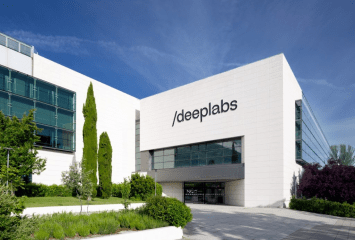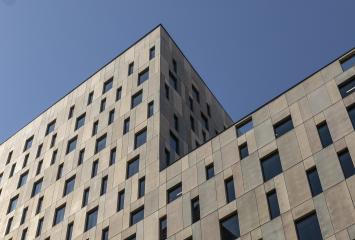Technology and Architecture: The Future of AI in Smart Buildings
The development of artificial intelligence (AI) in recent years has had a significant impact across multiple industries. The possibilities have expanded, and new horizons have opened up. Architecture is one of those fields. AI enables the automated generative design of buildings, intelligent environmental simulations to predict ecological costs during both the construction and operational phases, and soon, even autonomous construction for complex tasks. The future of construction inevitably involves artificial intelligence. Let’s explore the key areas where it will have a decisive influence.
Smart Energy Management
Architectural firms are increasingly focused on the sustainability of their projects, and AI can contribute significantly in this area. For example, AI can be integrated into energy management systems to optimize them. Through connected sensors and data collection systems in devices, lighting, and aerothermal systems, AI can make real-time decisions to ensure both lighting and thermal comfort while minimizing environmental impact.
Optimized Air Quality
Buildings must prioritize the well-being of the people who occupy them. This is what we call a human-centric approach at Colonial, and it is one of the pillars of our work. In this sense, ensuring that indoor air quality remains optimal is essential for well-being. However, we must also consider that ventilation can negatively affect thermal comfort and reduce the efficiency of aerothermal systems. This is where AI, with its sensors for CO2, humidity, and air particles, can strike the ideal balance.
Water Usage Control
Water is a finite resource on which humanity depends to survive, which is why it’s essential for all of us to manage and consume it responsibly. AI will also play a critical role here. By using sensors in faucets and showers, AI can understand usage patterns and intervene to make them more efficient. Actions such as reducing water pressure or automatically turning off accidentally left-on faucets can lead to significant water savings over the course of the year.
Advanced Home Automation
The fact that household appliances and electronic devices are connected to the same local network allows users to easily manage them—this is the essence of home automation. However, with the rise of AI, home automation now takes a leap forward. AI can detect faults in devices, schedule actions based on learned behavior, alert users about excessive consumption, and much more. The level of hyperconnectivity will increase exponentially with AI involvement.
Living Materials
Imagine a building constructed with materials capable of interacting with their environment, understanding, and responding to specific conditions. Picture a building whose materials automatically adjust to extreme temperatures or constantly report the structural state of the building. This is the future of architecture—one where materials are no longer passive components but active players in both the building’s maintenance and the well-being of its occupants.
Increased Inclusivity
A key aspect of the human-centric approach is recognizing that each person is unique, and buildings must be flexible enough to adapt to their individual needs. Artificial intelligence greatly enhances this flexibility. Among other things, it allows for adaptive designs for people with functional diversity and specific needs. This all happens in real time through the collection and processing of data. In short, AI will drive both sustainability and accessibility.

